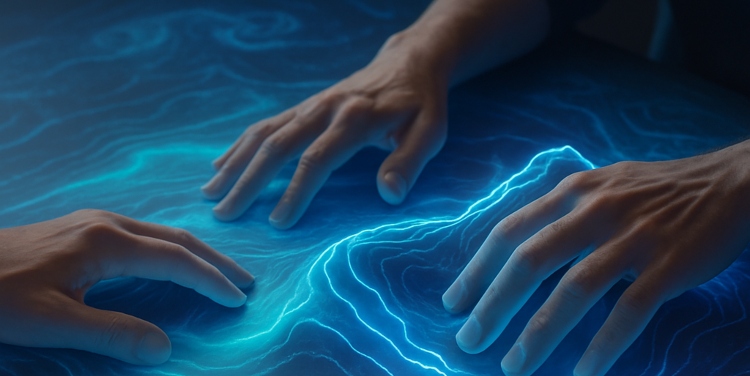Gaming technology has reached a fascinating crossroads where physical sensations merge with digital environments. Advanced haptic systems now create tactile surfaces that respond dynamically to in-game events, changing texture and temperature in real-time. This development represents a significant leap from traditional controller vibration — we’re talking about surfaces that can simulate sand, ice, or rough stone beneath your fingertips.
The technology builds on principles similar to those used in sophisticated analysis platforms like 1xbet registration systems, where precise user input detection creates responsive digital experiences. But here, the feedback loop works in reverse: instead of capturing user actions, the system delivers physical sensations back to the player.
Current Applications and Technical Implementations
Modern tactile gaming surfaces operate through several competing technologies. Ultrasonic haptic feedback systems represent one of the most promising approaches, using focused sound waves to create the sensation of texture without physical contact.
The technical specifications of current systems include:
- Surface temperature control ranging from 15°C to 45°C for environmental simulation
- Texture variation capabilities through micro-vibration patterns at frequencies up to 1000Hz
- Response latency under 5 milliseconds for real-time gameplay integration
- Multi-touch recognition supporting up to 10 simultaneous contact points
- Durability ratings exceeding 100,000 hours of continuous operation
Companies like Tanvas and Immersion have developed competing approaches to this challenge. Tanvas uses electrostatic friction modulation — essentially changing how slippery or rough a surface feels by altering electrical fields. When you slide your finger across their display, it can feel like different materials based on what’s happening in the game.
Market Analysis and Industry Applications
The tactile enhancement market has attracted attention from researchers studying user engagement metrics. Haptic technology market research shows projected growth rates exceeding 15% annually through 2027.
What’s particularly interesting is how this technology affects player performance. Studies indicate that tactile feedback can improve reaction times by 12-18% in certain game genres. Racing games benefit significantly — feeling the texture of different track surfaces helps drivers anticipate grip levels and adjust their driving style accordingly.
The betting industry has taken notice of these developments. Research firms now track “tactile enhancement betting” — wagering on whether specific haptic implementations will improve player performance metrics. The data suggests that games incorporating dynamic physical feedback systems see 23% higher player retention rates compared to traditional interfaces.
Future Development and Technical Challenges
Current limitations center around power consumption and heat dissipation. Creating realistic temperature changes across large surfaces requires significant energy, and maintaining precise control without creating hot spots presents ongoing engineering challenges.
Nevertheless, the trajectory appears promising. Prototype systems now simulate more complex sensations — imagine feeling raindrops in a weather simulation, or the recoil from different weapons having distinct tactile signatures. Some developers are working on surfaces that can create localized height changes, literally raising and lowering sections to match terrain elevation.
The integration challenge shouldn’t be underestimated. Game developers must now consider tactile design alongside visual and audio elements. This means rethinking user interface design from the ground up — buttons that feel different based on their function, menus with tactile navigation cues, and environmental storytelling through texture.
Temperature control presents another frontier. Current systems can simulate basic hot and cold sensations, but researchers are working on more nuanced thermal feedback. Picture feeling the warmth of sunlight on your character’s face, or the chill of entering a cave system.
Cost remains a significant barrier to widespread adoption. Professional-grade tactile surfaces currently run $3,000-$8,000 per unit, limiting their appeal to enthusiast markets and research institutions. Mass production could reduce these costs, but we’re likely looking at 3-5 years before consumer-grade options become viable.
The technology’s potential extends beyond gaming. Medical training simulations, automotive design, and architectural visualization all stand to benefit from tactile feedback systems. What starts in gaming often finds broader applications — and tactile surfaces appear to be following this familiar pattern.
For now, early adopters get to experience gaming in ways that seemed impossible just a decade ago. The sensation of running your fingers across virtual surfaces that respond with appropriate texture and temperature creates an immersion level that has to be experienced to be understood.
David Prior
David Prior is the editor of Today News, responsible for the overall editorial strategy. He is an NCTJ-qualified journalist with over 20 years’ experience, and is also editor of the award-winning hyperlocal news title Altrincham Today. His LinkedIn profile is here.













































































